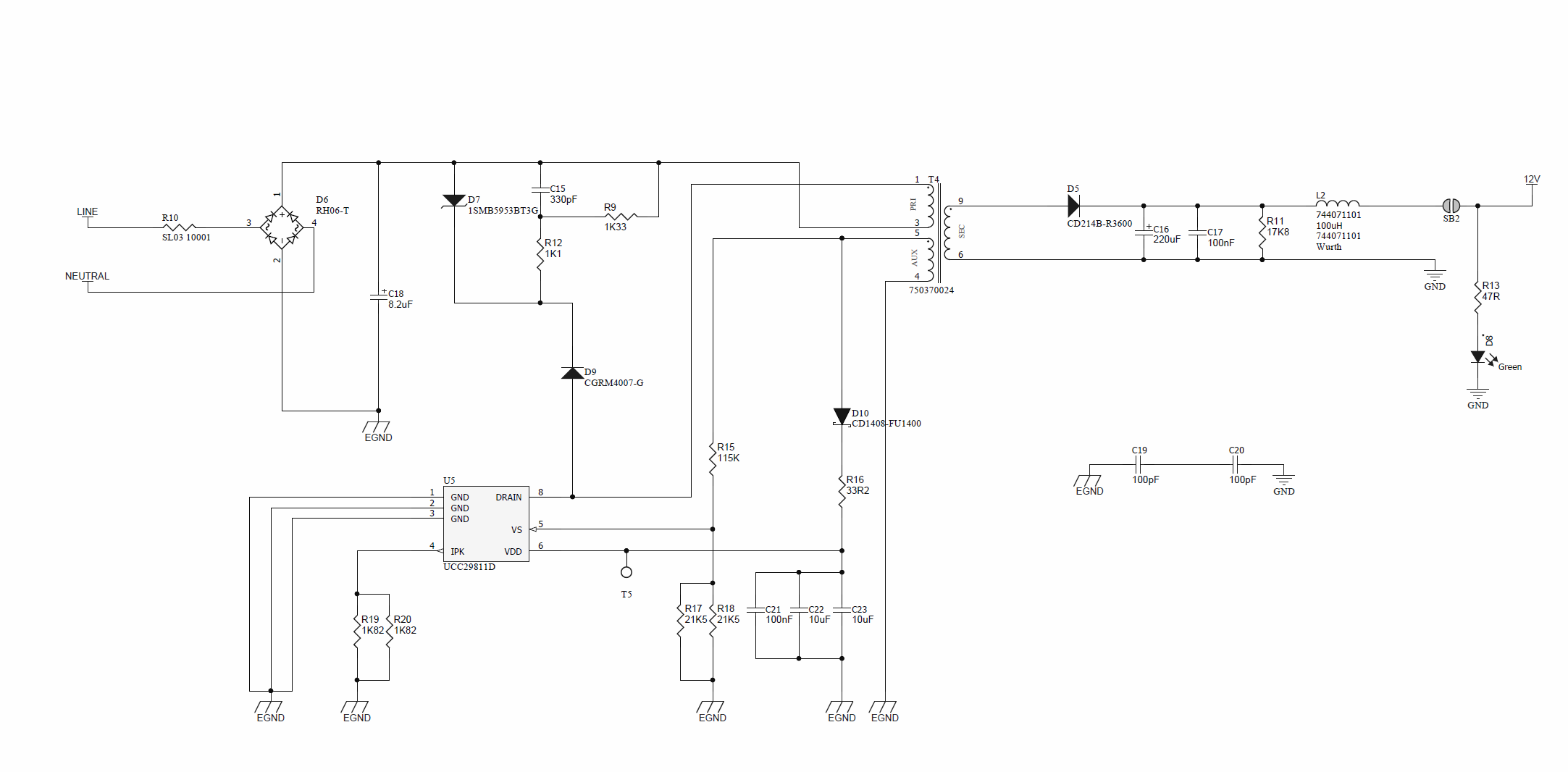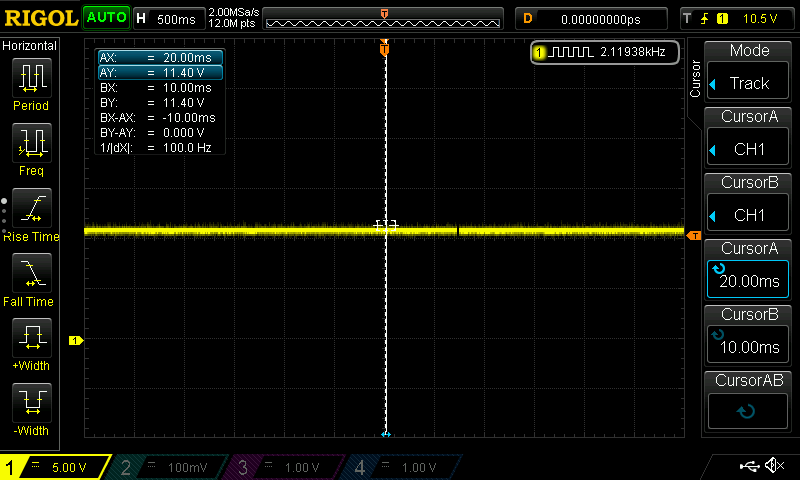Hi there,
I hope someone can advise me regarding to couple of issues that I am having with UCC28911 that I have designed.
Current design uses Universal AC input and generates 12V on the secondary side of the transformer. Due to some height and width restrictions of the mechanical design, I have used the 750370024 transformer from Wurth.
The problem is when I turn the power on from the mains, I do get the 12V ~13V coming out from the secondary side of the transformer and seems to work fine up to this point. I have a switcher that get connects to 12V power rail to generate 3.3V for micro-controller. I do get the 3.3V coming out from the switcher as well.
But when I connect my external microcontroller board to the 3.3V rail, UCC28911 resets with varying time. When I first plug it in, it works for good few minutes and stops and starts to reset. Any idea about what might be the problem is really appreciated.
I am attaching a schematic as well, hope to hear some usefull response to help me to debug the issue




